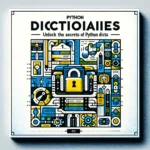I. Introduction to Machine Learning and TensorFlow
A. What is Machine Learning (ML)?
Machine learning (ML) is a branch of artificial intelligence (AI) that focuses on building systems capable of learning from and making decisions based on data. Instead of following explicitly programmed instructions, these systems develop their own algorithms based on the data input they receive, enabling them to improve over time. This capability is crucial in today’s tech-driven world, where data is abundant and constantly evolving. From personalized recommendations on streaming platforms to predictive analytics in healthcare, ML applications are vast and transformative.
B. Why TensorFlow for Machine Learning?
TensorFlow stands out as a preferred framework for many developers venturing into machine learning. Developed by Google Brain, TensorFlow offers an intuitive interface for building and training ML models, making it accessible for beginners. Its key benefits include ease of use, extensive community support, and the ability to scale from research to production seamlessly. Whether you’re aiming to develop complex neural networks or just starting with basic algorithms, TensorFlow provides the tools necessary to bring your projects to life.
II. Key Concepts and Terminology
Before diving deeper, it’s essential to understand some key concepts and terminology in machine learning and specifically in TensorFlow:
- Tensor: The fundamental data structure in TensorFlow, representing a multi-dimensional array of data.
- Graph: TensorFlow uses a graph framework, where nodes represent operations and edges represent the data (Tensors) that flow between them.
- Session: This is the environment in which TensorFlow operations are executed, and where the state of the variables is maintained.
- Optimizer: An algorithm for adjusting the parameters of your model to minimize the loss function.
- Loss Function: A method of evaluating how well your algorithm models your dataset. If your predictions are totally off, your loss function will output a higher number.
Incorporating “TensorFlow introduction for beginners” naturally into discussions helps emphasize the practical and theoretical aspects of machine learning, making the topic more approachable for newcomers.
III. Real-World Examples
Consider a simple project: building a model to classify images of clothing items. TensorFlow simplifies this process, allowing you to focus on the model’s architecture rather than the underlying math. Through TensorFlow’s comprehensive libraries and resources, beginners can easily experiment with different models, train them with a significant dataset like Fashion MNIST, and evaluate their performance.
IV. Code Examples
Let’s illustrate with a basic example: setting up and training a neural network to classify handwritten digits using TensorFlow.
import tensorflow as tf
# Load the MNIST dataset
mnist = tf.keras.datasets.mnist
(x_train, y_train), (x_test, y_test) = mnist.load_data()
# Normalize the data
x_train, x_test = x_train / 255.0, x_test / 255.0
# Build the TensorFlow model
model = tf.keras.models.Sequential([
tf.keras.layers.Flatten(input_shape=(28, 28)),
tf.keras.layers.Dense(128, activation='relu'),
tf.keras.layers.Dropout(0.2),
tf.keras.layers.Dense(10)
])
# Compile the model
model.compile(optimizer='adam',
loss=tf.keras.losses.SparseCategoricalCrossentropy(from_logits=True),
metrics=['accuracy'])
# Train the model
model.fit(x_train, y_train, epochs=5)
# Evaluate the model
model.evaluate(x_test, y_test)
This code trains a model to recognize handwritten digits with high accuracy. The comments highlight important steps and decisions in the process, making the code accessible to readers with various levels of programming expertise.
V. Analogies
Think of TensorFlow like a vast toolkit. Just as a carpenter chooses specific tools for different tasks, a machine learning engineer uses TensorFlow’s functionalities to build and refine models. The process can be akin to sculpting, where the initial rough shape is refined into a detailed figure, representing the iterative improvement of a model.
VI. Conclusion and Next Steps
We’ve explored the basics of machine learning and the pivotal role of TensorFlow in this domain, covering everything from key concepts to practical code examples. As you embark on your machine learning journey, remember that practice is key. Start small, experiment with different models, and gradually explore more complex projects.
Stay tuned for our next topic, “Understanding the Building Blocks of TensorFlow“, where we’ll dive deeper into TensorFlow’s components and how to leverage them for more advanced applications.
Are you ready to take your first steps with TensorFlow? Or perhaps you’ve already started and have experiences to share? Join the discussion below and let’s learn from each other’s journeys in the world of machine learning. Your questions, insights, and experiences are invaluable to building a supportive community for beginners and experts alike.


